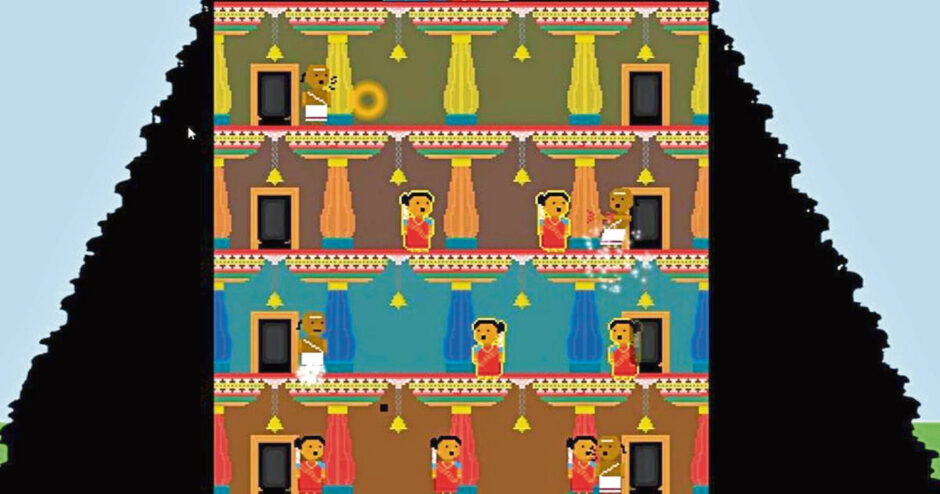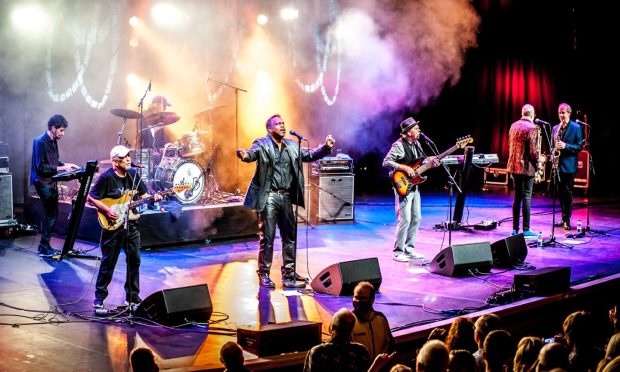NEoN Digital Arts Festival is back in Dundee this autumn, with a packed programme of live and digital events including work by ecosexual artists.
So what is an ecosexual? This relatively new identity is centred around imagining the Earth as a lover and an equal partner, rather than as “Mother Earth” or as a resource for us to exploit.
It puts a fresh spin on traditional environmental campaigning and helps those involved in the cause stay motivated, explains NEoN curator and artist Ailie Rutherford.
Celebrating Earth
“It can be quite hard to maintain the motivation to keep campaigning in the face of global greed,” she says. “The artists’ work is all about celebrating the connection to the Earth and extending this love to all the world.
“The festival coincides with COP26, so we invited artists to show ecosexual work, which brings a real sense of joy and hope for environmental campaigners.”
This year’s theme is Wired Women and aims to address the digital gender divide and highlight the contribution of female and non-binary artists in shaping the digital and technology-driven arts sector.
Nature as a lover
The four-day festival features exhibitions, talks, performances and discussion until tomorrow, Saturday November 13.
Ecosexuals Beth Stephens and Annie Sprinkle will present a series of new digital collages entitled Assuming the Ecosexual Position, at Slessor Gardens.
Their work is steeped in humour and love, presenting the Earth as their lover and exploring issues such as feminism, gender, sexuality and materialism.
Wired Women
A new bespoke online festival platform created by Rifke Sadleir is being created to host exhibitions, screenings, new commissioned text works and interactive games, showcasing the festival across the globe.
Padmini Ray Murray, working remotely from Bangladesh, will present an online game world, an interactive environment centred on the idea of data trust and data commons, using the garden or seed bank as a metaphor.
People will be able to interact in the space and upload things to make plants and trees grow — a collaborative online world-making. The work provides an opportunity and context to start conversations about ownership of archives and decentralised data trusts, corporate data ownership and exploitative use of data. Meanwhile, activist and artist Fannie Sosa is creating a White Institution’s Guide (WIG) to welcome artists of colour and their audiences.
Hybrid events
Taking the form of seven creatures found on the shores of the Black Atlantic, this interactive web-based resource aims to answer questions people might have about inviting artists of colour to a white institution.
One of the festival’s live events will be held at Overgate Shopping Centre in Dundee, which will host Camille Baker’s new multi-sensory, immersive art installation INTER/her.
This work, which was shortlisted for the Lumen Prize in the 3D/Interactive category, takes Camille’s personal experience and those of other women who have had post-reproductive diseases and pain to create a virtual reality, sound and haptic installation.
A variety of artists
The work explores the psychological issues of womanhood, the sense of self and the inconsistencies in support for women’s health, drawing on Camille’s experience of the healthcare system.
Other exhibiting artists include Rosana Cade, Holly White, Helen Pritchard, Femke Snelting, Shannon McRae, Camara Taylor, Dr Lee Weinberg, hidden route and Hayley Blakeman, and Semiconductor.
“Because it’s a digital festival to begin with, it lends itself to being presented online, more so than other art forms,” adds Ailie Rutherford.
A woman-centred event
“The only disappointing thing is that all these really exciting artists aren’t going to be able to fly to Dundee this year and have a big opening event. It would be amazing to have all these interesting people in a room together.
“I would be really hopeful that in future, if I’m involved in the festival again, we will be able to all get together in person, but I also think the hybrid model works well. It allows for wider accessibility for people with disabilities, or who live far away, or are single parents who can’t get out for the night.
“It’s important to state that the festival centres the experience of women, including trans and intersex women. Quite a few of the artists are non-binary. They use the pronoun ‘they’ rather than ‘she’.
Digital divide
“The digital gender divide exists on many levels, an obvious example being that there are far fewer women working in tech and very few tech companies are run by women. This means that the technology that shapes our lives very much centres the worldview of white, Western men.
“These issues intercept gender, race and class, and are really important things to talk about.”












